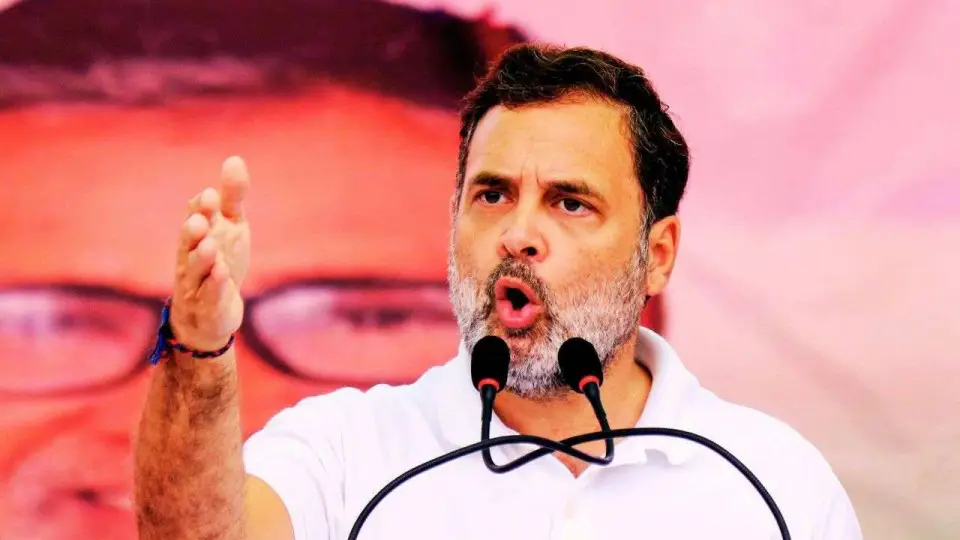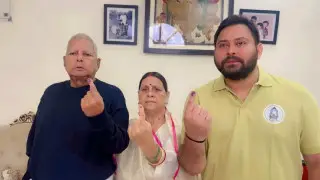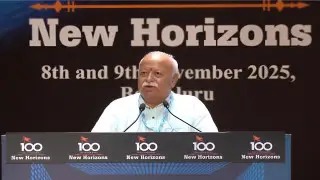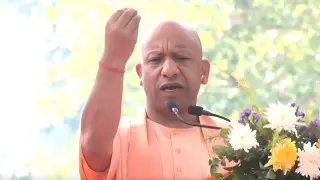
Rahul Gandhi, Vote Theft (Credit: OpenAI)
New Delhi: Rahul Gandhi recently accused the Haryana elections of massive vote theft, presenting his argument as if he had uncovered a major plot. However, when those claims were checked through actual voter records, polling reports, and Election Commission documents, they did not match his statements. The claims looked dramatic, but the facts did not support them.
Many of his points seemed based on assumptions rather than verified data. Political experts say that such allegations must have evidence, not just speeches. Without proof, such claims risk misleading the public. This is why many people began questioning the purpose behind the accusations.
#WATCH | Lucknow | On Rahul Gandhi's allegations of "vote chori", Congress MP Pramod Tiwari says, "What Rahul Gandhi is saying is 100 per cent true. There was theft of 25 lakh votes in Haryana, so the Election Commission with the BJP is not only doing 'vote chori' but also… pic.twitter.com/C4Xi5HiHx1
— ANI (@ANI) November 10, 2025
One of Gandhi’s biggest accusations was that a woman’s name appeared more than 200 times on voter lists. This was shown as proof of fake voters being used to change election results. But booth mapping records showed something different: the booth was split into two for administrative reasons due to population growth in the area. This is a normal process done across India before elections. The so-called “duplicate list” came from a constituency where Congress actually won. If rigging happened, it would not make sense for the Congress to win that very booth. This made the claim collapse under basic logic. It also raised concerns about whether the claim was checked before being made public.
#WATCH | On 'vote chori' allegations by Lok Sabha LoP Rahul Gandhi, UP Deputy CM Keshav Prasad Maurya says, "Ulta chor kotwal ko daante. Rahul Gandhi & Company are trying to make Tejashwi Yadav lose. They are trying to make VIP candidates lose. But they are levelling allegations… pic.twitter.com/EH9L4y9Hkw
— ANI (@ANI) November 10, 2025
Rahul Gandhi also used exit polls to support his point, saying they predicted Congress winning. However, exit polls have always been known to have margins of error. Gandhi himself has previously rejected exit polls whenever they did not favour his party. Accepting exit polls only when they support one’s view and rejecting them otherwise creates a one-sided narrative. Data must be used consistently to be credible. Political analysts say using selective information can mislead voters. This selective approach weakened the strength of his argument and made it appear emotionally driven rather than fact-based.
Gandhi claimed that ballot paper trends showed Congress leading before final results changed. Ballot paper votes form less than one percent of total votes. Early leads from such a small sample cannot be used to claim large-scale fraud. In some places, the BJP also led in ballot papers but lost later after EVM counting. This shows that ballot paper trends naturally shift when full counting happens. Experts explained this many times in past elections too. Turning a normal counting pattern into a claim of fraud is misleading. It risks creating doubt where none exists.
Gandhi also circulated a short video of the Haryana Chief Minister, suggesting he hinted at vote theft. However, the full video showed that the Chief Minister was simply expressing confidence in forming the government. The edited clip removed key sentences that changed the meaning. This raised concerns about selective editing being used to create a false impression. Sharing incomplete content can cause public misunderstanding. The Chief Minister openly denied Gandhi’s interpretation. Many viewers later felt misled after seeing the complete footage.
The claim that a Brazilian influencer’s image was used on multiple voter IDs also did not stand when checked. The woman confirmed publicly that she had no link to Indian politics. Her picture had been taken from an old stock photo website. This shows that the claim was made without verifying the origin of the image. It also shows the risk of building political claims too quickly. Genuine voter verification processes exist and were followed. No complaint was filed at the time of voting. The issue appeared more sensational than factual when examined closely.
These repeated claims, when examined carefully, did not hold strong factual support. When political narratives are built on weak evidence, they can damage public trust in elections. Elections depend on rules, checks, observers, and public verification. India’s election system involves thousands of workers across parties, including Congress itself. Raising doubts without clear evidence affects confidence in the democratic process. Responsible leadership requires careful statements supported by facts.













Copyright © 2025 Top Indian News
